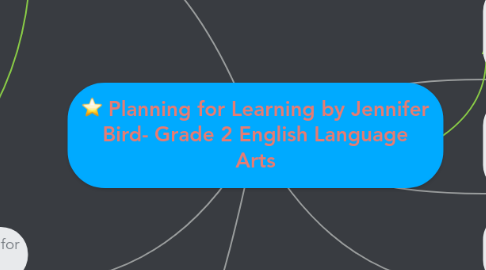Planning for Learning by Jennifer Bird- Grade 2 English Language Arts
создатель Jennifer Elizabeth


1. Scaffolding strategies for RL.2.6.
1.1. Allow students to discuss and organize their thoughts on the story. Have students complete a graphic organizer. Graphic organizers are good tools to use to keep students engaged in the reading and assess their comprehension as they navigate through the text.
1.1.1. Graphic organizers for young children should be kept as simple as possible so that the students' focus does not shift from the primary purpose, which is to understand what she is reading.
1.2. Introduce Background Information:Giving them information ahead of the reading assignment will allow them build a foundation for the subject.
1.3. Read Aloud and Think Aloud: allows teachers to demonstrate reading fluency while also modeling specific behaviors that are common to good readers. The method asks teachers to read portions of the text and pause and ask for feedback from students.
1.4. Write about it: have students write about specific and key details pulling specific words and phrases from their story into what they are writing.
2. Scaffolding strategies for objective RL.2.2
2.1. Close Reading: Read the story together as a class so that students can hear the story ready correctly. Have students re-read the story with a buddy. Review the story and its major components together and discuss key points and vocabulary. Students should have a clear understanding of the themes, characters, problems, and solutions.
2.2. Pre-teach the vocabulary and have students practice using key words.
2.3. Discuss the story and allow students to discuss depth of knowledge questions with peers.
2.4. Pause and ask questions, pause and review information and key points from the story.
2.5. Have students relate morals and lessons to their personal life lessons.
2.5.1. Have students create and share their own DOK (depth of knowledge questions).
2.5.1.1. Have students create and present different scenarios related to the morals learned int he story.

